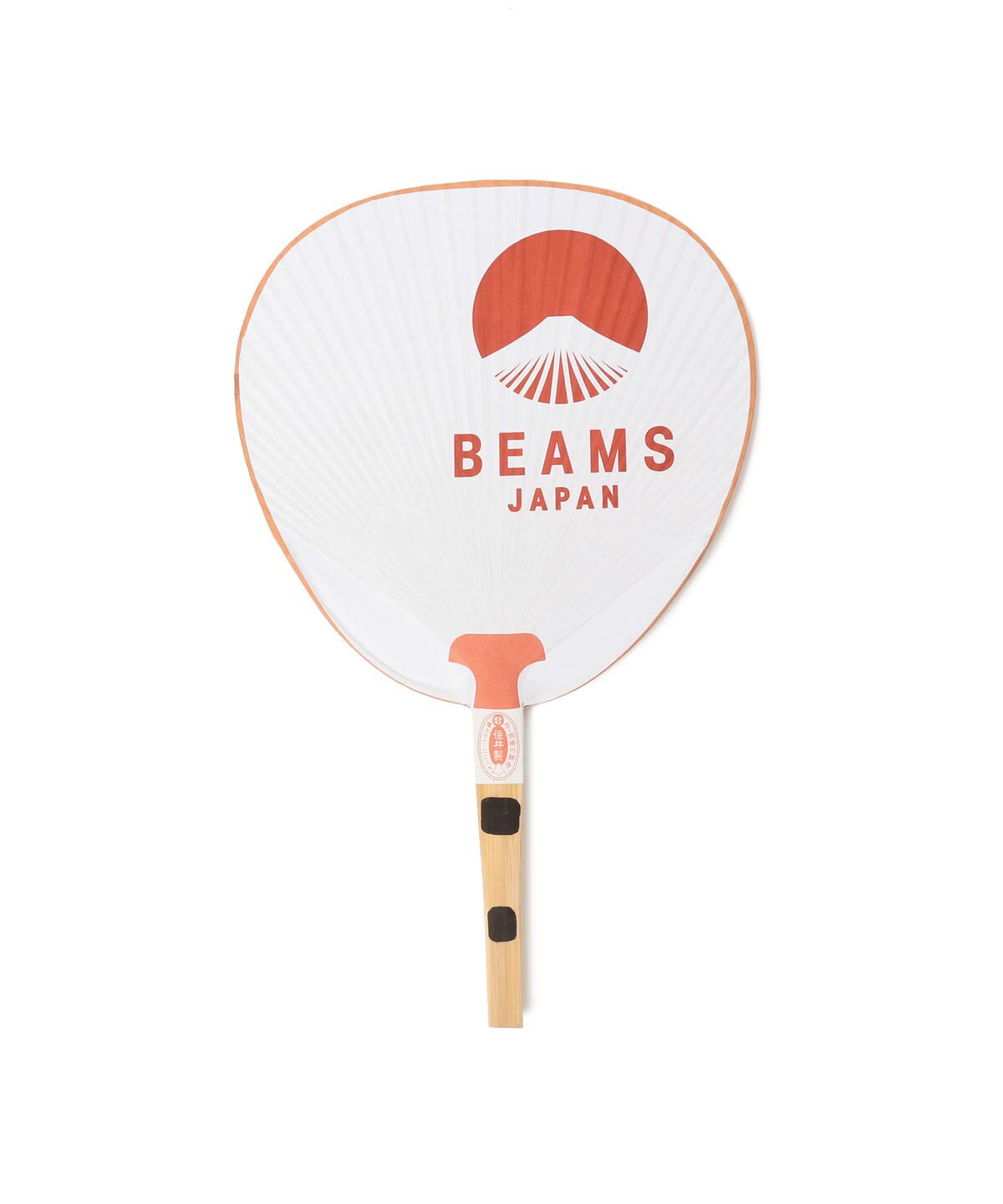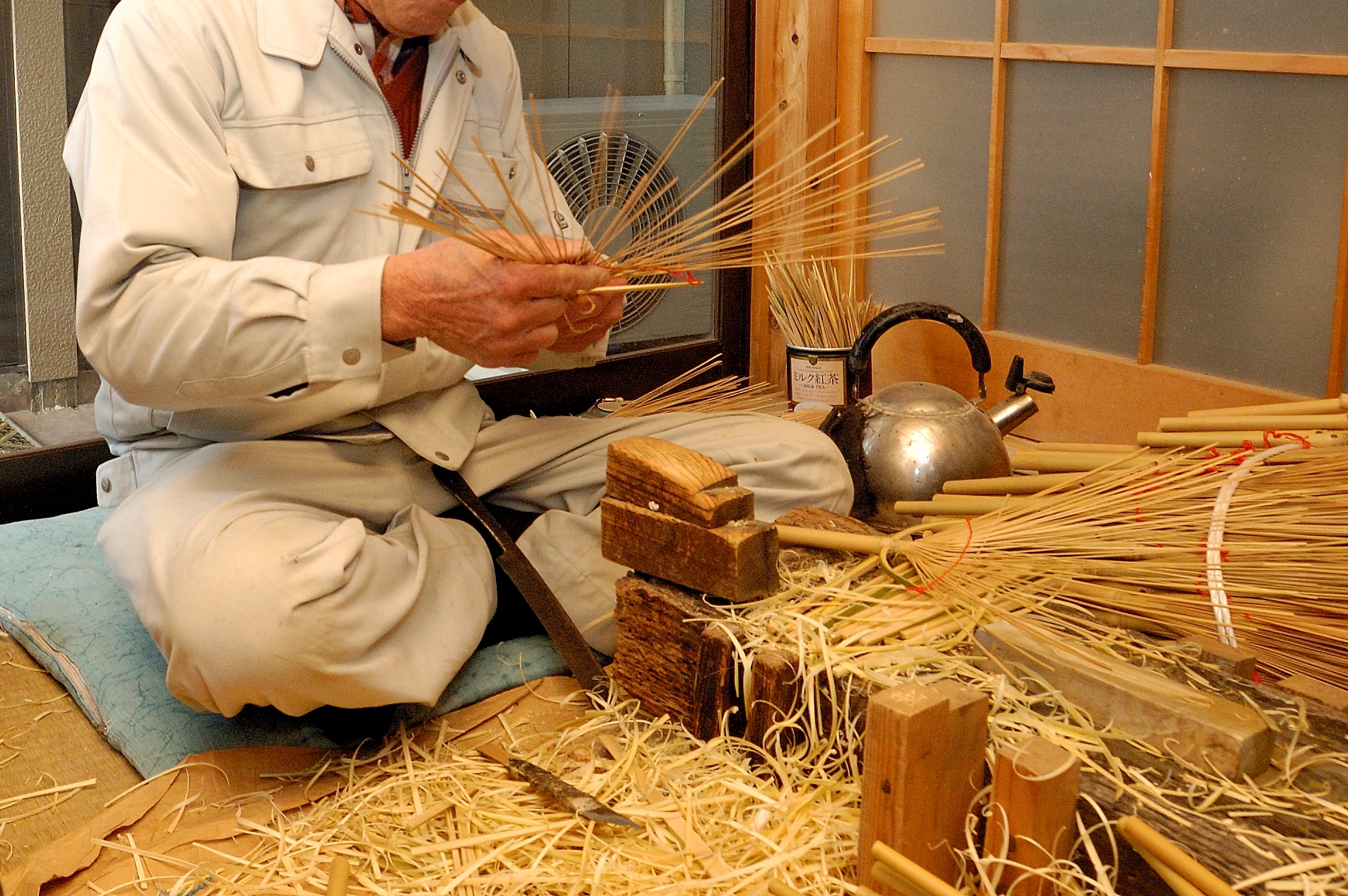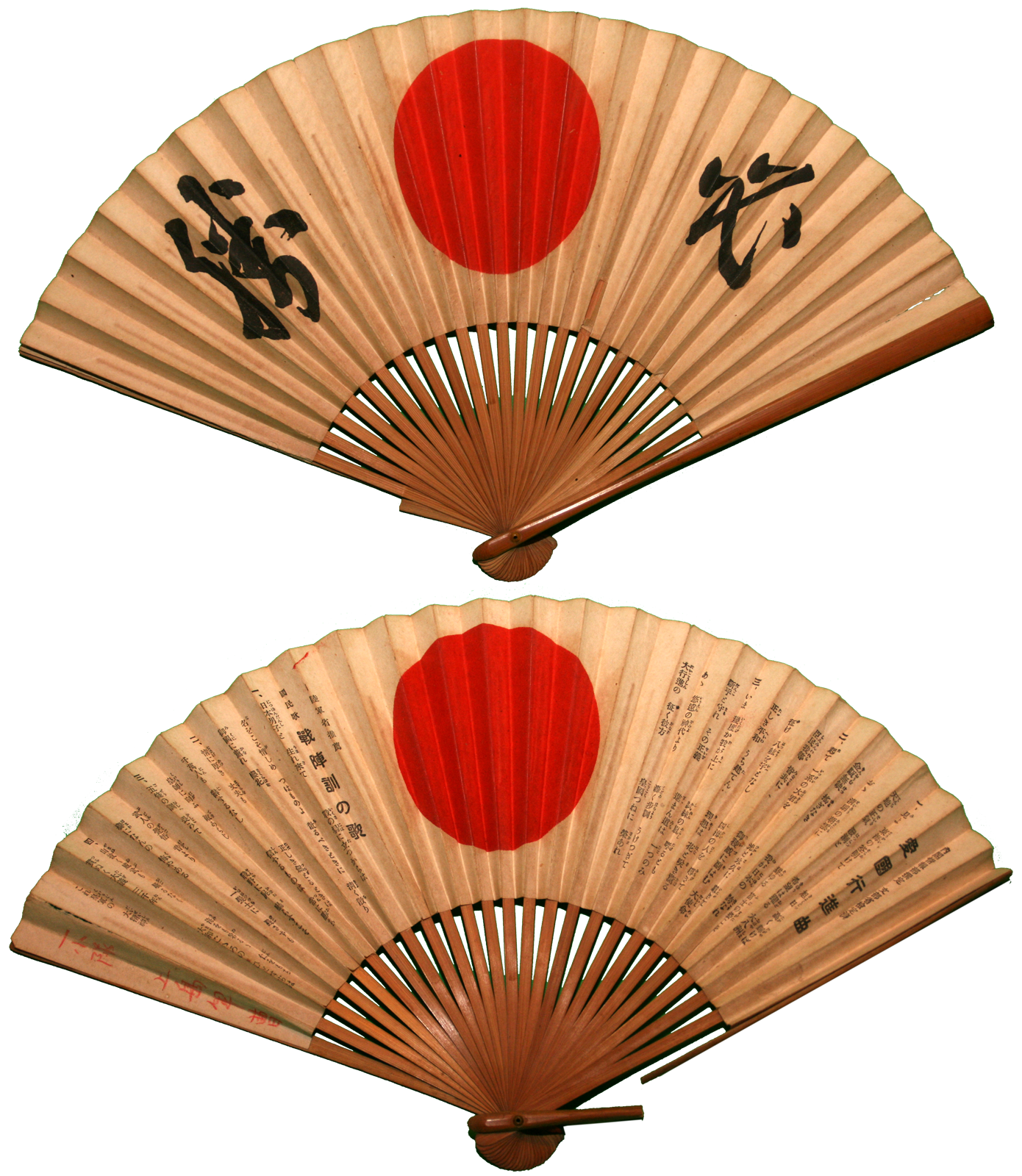Japanese Fans
In ancient Japan, hand fans, such as oval and silk fans were influenced greatly by the Chinese fans. The earliest visual depiction of fans in Japan dates back to the 6th century CE, with burial tomb paintings showed drawings of fans. The folding fan was invented in Japan, with date ranging from the 6th to 9th centuries.
They were made by tying thin stripes of hinoki (Japanese cypress) together with thread. The number of strips of wood differed according to the person's rank. Later in the 16th century, Portuguese traders introduced it to the west and soon both men and women throughout the continent adopted it. They are used today by Shinto priests in formal costume and in the formal costume of the Japanese court (they can be seen used by the Emperor and Empress during enthronement and marriage) and are brightly painted with long tassels. Simple Japanese paper fans are sometimes known as harisen.
Printed fan leaves and painted fans are done on a paper ground. The paper was originally handmade and displayed the characteristic watermarks. Machine-made paper fans, introduced in the 19th century, are smoother, with an even texture. Even today, Geisha of all types (but maiko most often) use folding fans in their fan dances as well.
Japanese fans are made of paper on a bamboo frame, usually with a design painted on them. In addition to folding fans (ōgi), the round non-bending fans (uchiwa) are popular and commonplace. The fan is primarily used for fanning oneself in hot weather. The uchiwa fan subsequently spread to other parts of Asia including Myanmar, Thailand, Cambodia and Sri Lanka and to this day are still used by Buddhist monks as "ceremonial fans".
It was also used in the military as a way of sending signals on the field of battle, however fans were mainly used for social and court activities. In Japan, fans were variously used by warriors as a form of weapon, by actors and dancers for performances, and by children as a toy.
The Mai Ogi (or Japanese dancing fan) has ten sticks and a thick paper mount showing the family crest, and Japanese painters made a large variety of designs and patterns. The slats, of ivory, bone, mica, mother of pearl, sandalwood, or tortoise shell, were carved and covered with paper or fabric. Folding fans have "montures" which are the sticks and guards, and the leaves were usually painted by craftsmen. Social significance was attached to the fan in the Far East as well, and the management of the fan became a highly regarded feminine art. Fans were even used as a weapon - called the iron fan, or tessen in Japanese.
In modern times many people have a special fan that is kept for special occasions like matsuri festivals, weddings, ceremonies, etc. Other fans are also used for staying cool during the summer. These can be bought in stores, convenience stores, etc. They are also given out for free by with printed advertisements. Some have pop idols on them. Many fashion brands also make their own summer fans. So there is a very large variety of fans with different prices and types.
There is a way to snap a fan opened and closed with one hand and in a gracefully snapping, inward motion. You can find tutorials on youtube and practice.
How to Open Folding Fans:
Hold the head of the folding fan, i.e., the part with the metal rivet, with one hand.
Check that the design of the hand fan is facing up and that the spokes completely drop in an outward direction or away from you so that when the fan finally opens, its front design faces outward or the audience. You can see whether the hand fan's design faces up through the clarity of the colors of the design, which peeks through the folded leaf.
Simultaneously bring your fan in a slanting direction in-front of you and loosen your grip on four fingers, i.e., the index to small finger, so that the outer guard side and spokes freely drop and the folding fan opens in a snap and in an inward direction or in-front of you. Opening a folding fan inwards is important as it prevents you from hitting the person next to you.
Folding fans with thick leaves, like Battenburg lace fans, paper folding fans, and cloth fans, may require that their folds be properly established before they can be opened in a snap. To open a new folding fan, guide their spokes by sliding the latter downward using your thumb. Similarly, ensure that the fan opens in-front of you and its design faces outward.
How to Close a Folding Fan:
To close a folding fan, turn your wrist upside-down to bring the dropped spokes of the hand fan up. This gesture causes the hand fan's spokes to drop naturally, gather on your palm, and bring the hand fan to a close and to its original position.
To close a new folding fan, similarly turn your wrist upside-down to bring the dropped spokes of the hand fan up. Gently slide the hand fan's spokes downward with the help of your fingers to bring the hand fan to a close and to its original position.
We have some folding fans (ogi) at our store as well as round fans (uchiwa) by Beams Japan.






